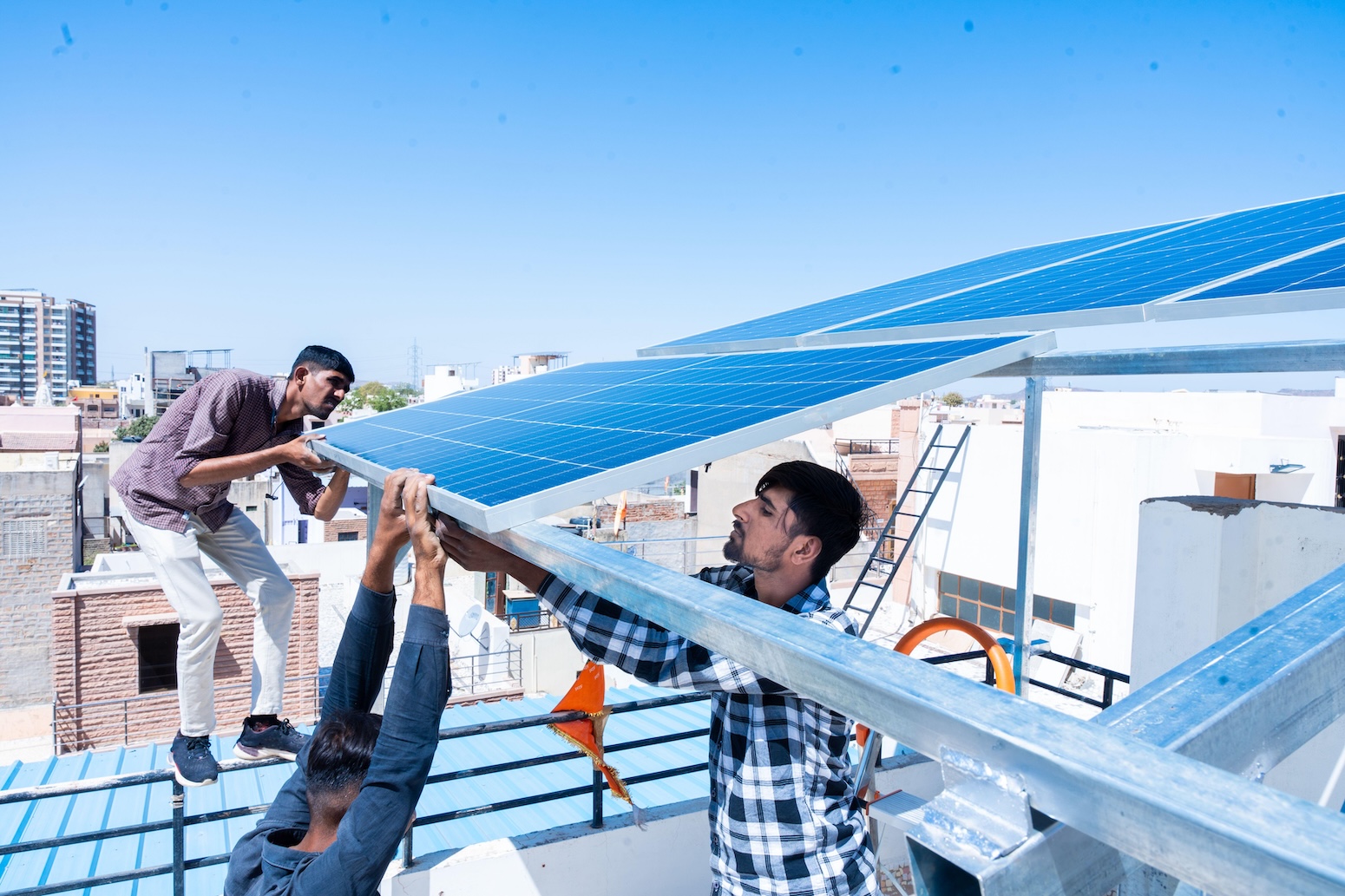The global printable solar cell market revenue is expanding around US$ 40 billion by 2030 with a CAGR of 4.01% from 2021 to 2030. Rising demand for electricity owing to surging population across the globe is expected to propel the growth of the printable solar cell market.
The global demand for clean and renewable energy sources is growing rapidly. As the world becomes more aware of the dangers of climate change, governments and businesses alike are investing in sustainable energy solutions. One of the most promising developments in this field is the printable solar cells market.
What is Printable Solar Cells?
Printable solar cells, also known as printed solar cells, are a type of solar technology that can be produced using printing techniques. These solar cells are made from materials such as organic polymers or inorganic compounds, which can be deposited in thin layers onto flexible substrates such as plastic, metal, or paper. The printing process can be carried out using various techniques such as screen printing, inkjet printing, or roll-to-roll printing.
Printable solar cells have several advantages over traditional silicon solar cells. They are lightweight, flexible, and can be produced in large quantities using cost-effective printing techniques. This makes them particularly useful for applications such as portable electronic devices, building-integrated photovoltaics, and outdoor advertising.
However, printable solar cells currently have lower efficiency compared to traditional silicon solar cells, which limits their commercial viability for larger-scale energy production. Nevertheless, ongoing research and development in the field of printable solar cells are expected to improve their efficiency and performance in the coming years.
Market Overview
The global printable solar cells market is expected to grow significantly over the next few years. The market is expected to grow from $28.08 billion in 2022 to $40 billion by 2030, with a compound annual growth rate of 4.01%.
Rising demand for electricity owing to surging population across the globe is expected to propel the growth of the market. Moreover, the capability of printable cells to provide electricity in residential and commercial areas is also proliferating the market share. Increasing advancement of technology along with surging research and development activities triggers the potential growth of the industry.
One of the key drivers of this growth is the increasing demand for renewable energy sources. As governments around the world set ambitious targets for reducing carbon emissions, the need for affordable and efficient solar technology is greater than ever. Printable solar cells offer a cost-effective and scalable solution to this problem.
Another factor driving the growth of the printable solar cells market is the rapid advancement of printing technology. As printing techniques continue to improve, it is becoming increasingly easy and cost-effective to produce high-quality printable solar cells. This, in turn, is making the technology more accessible to businesses and consumers alike.
Ask here for more details@ https://www.precedenceresearch.com/sample/1828
The applications of printable solar cells are vast and varied. One of the most promising is in the field of portable electronics. By integrating printable solar cells into devices like smartphones and laptops, manufacturers can extend battery life and reduce the need for charging. Printable solar cells can also be used in outdoor clothing and accessories, allowing wearers to generate their own electricity on the go.
In addition, printable solar cells can be used in large-scale power generation projects. By printing solar cells onto flexible materials like fabric or plastic, it is possible to create solar panels that can be easily transported and installed in remote or difficult-to-access locations. This makes printable solar cells an ideal solution for off-grid communities and developing countries.
Growing penetration towards environmental concern due to increasing usage of fossil fuels. The harmful effects due to the extensive usage of fossil fuel such as depletion of ozone layer is shifting the market towards renewable resources. Solar energy has been proven effective in reducing the carbon impression on climate and also alleviates the additional cost.
Printable solar cells can draw energy from a variety of sources, including walls, rolling blinds, cover umbrellas, drapes, and tents. These programmes are intended to provide extra electrical capability to both private residences and public buildings around the world. The market for printable solar driven cells is anticipated to benefit from these factors sooner rather than later. Due to their low cost edge over conventional silicon cells, it is predicted that the growth of the global solar industry will increase interest in printable solar-oriented cells. However, a rise in demand for affordable solar-based power components, such as solar-powered devices, is anticipated to drive the market for printable solar-oriented cells.
Asia Pacific dominated the market
Based on regions, the market is segmented into Middle east, Asia Pacific, Africa, Latin America, North America and Europe. Asia Pacific accounted the largest share in overall Global Printable solar cells market.
North America is expected to grow significantly owing to increasing penetration towards the solar energy. Surging urbanization and industrialisation in Middle East and Africa is also anticipated to propel the growth of the market. US, Germany and UK is also expected to gain significant growth during the forecast period.
COVID-19 Impact
The outburst of coronavirus pandemic has adversely affected the growth of the market owing to the stringent regulations imposed by the government. The spread of deadly virus has declined the demand for printable solar cell owing to the decline in demand from building and businesses. The lockdown imposed by the government in various economies led to shutting down of various commercial units.
Conclusion
In conclusion, the printable solar cells market is a rapidly growing and exciting field. As the world continues to shift towards sustainable energy sources, printable solar cells offer a cost-effective and scalable solution. With advances in printing technology and increasing demand for renewable energy, the future of printable solar cells looks bright.
Key developments
August 2019: Meyer Burger, a Swiss design company, sold the first equipment for manufacturing solar-powered cells to Oxford PV, a UK-based perovskite expert company. Oxford PV anticipates using this purchase to build a 250 MW maximum perovskite exceptional creation plant by the end of 2020.
Inkjet-printed perovskite solar cells were officially launched as a commercial product range in February 2019 by Saule Technologies. As of 2020 closures, the organisation intends to construct 180,000 square metres of solar-powered outlets.
LONGi and Swedish businessman Senergia entered into a joint agreement in April 2020 for the stockpile of 9.2 MW of its Hi-MO4 modules. About 25,000 components of various power are included in the understanding, including 1,320 bits of 440 W and 23,400 bits of 370 W.
JA Solar introduced new Ga-doped wafer-based panels in March 2020. The Ga-doped silicon wafer invention is meant to improve power age and security performance.
Canadian Solar announced the start of the construction of two solar-powered electricity projects in Japan in February 2020. These two projects, which are located independently in Ibaraki Prefecture and Fukuoka Prefecture and are expected to have capacities of 13.6 MWp and 13.0 MWp, respectively. By the middle of 2021, these projects are expected to be operational.
To strengthen their market place and increase market share, the major market players are constantly taking part in various formative processes like partnerships, joint ventures, the introduction of new products, and acquisitions.
The major players operating in the printable solar cell market are Nanosolar Corporation, InfinityPVApS, E. I. du Pont de Nemours and Company, Triton Solar LLC, JinkoSolar (China), JA Solar (China), Trina Solar (China), LONGi (China), and Canadian Solar (Canada).
By Technology
- Bulk Heterojunction Solar Cells
- Dye sensitized solar cells (DSSC)
By Application
By End Use
- Residential
- Commercial & Industrial
- Utilities
- Others



















Discussion about this post